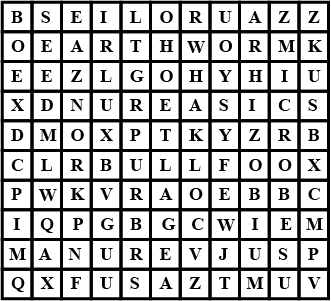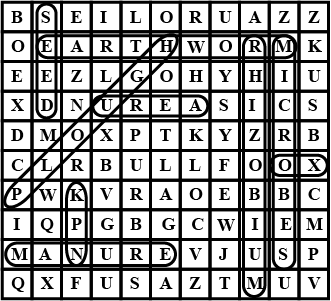Vedantu’s Class 8 Science Solutions Chapter 1 Crop Production and Management - Free PDF download
FAQs on NCERT Exemplar for Class 8 Science Solutions Chapter 1 Crop Production and Management
1. What is animal husbandry?
Animal husbandry is the practice of producing animals and selective breeding. It is the practice of managing and caring for animals to improve their genetic traits and behavior for profit. A substantial percentage of farmers rely on animal husbandry as a source of income. Animals supply us with a wide range of high-nutrient dietary items. As a result, they necessitate a great deal of care and attention. Commercial animal breeding is done to supply the rising demand for food. Animal dairy products, such as cows, buffaloes, and goats, are high in protein. These creatures are known as milch animals because they provide humans with milk. Hens, ducks, and geese are examples of animals that give nutrient-dense food. They offer us eggs, which are high in protein as well.
2. What is the importance of food storage?
Food storage is cost-effective when compared to the potential implications of not doing so. Food Corporation of India (FCI) purchases grains from farmers and keeps them in warehouses to fulfill the ever-increasing demand for food. Increases the life of a food item's shelf life. Various food products can be stored in a variety of ways. Meat, for example, must be stored in the refrigerator because of its high moisture content, which causes it to degrade fast. Storage allows for consistent distribution of products throughout the year. Helpful in times of crisis, such as starvation.
3. What is the difference between threshing and winnowing?
Threshing is the process of removing the grains from the stalks by pounding the sheaves against wooden bars. Threshing was commonly done on a threshing floor, which was a distinct area of ground. The floor of some threshing floors was flattened circular or paved surface (outside), but in small-scale farming, the floor was frequently stone or wooden plank. Winnowing is the process of removing the undesirable husk from the food. It is accomplished by pouring the grains from a height on a windy day, allowing them to fall to the ground and the chaff to be swept away. Blowing on rice grains to remove chaff is an example of winnowing when you succeed.
4. How can farmers protect crops through weeding?
Weeding is the process of removing weeds from a field. It's an excellent way to safeguard crops and regulate crop yield before harvesting. Weeds compete with the crop for numerous resources essential for growth, such as nutrients, light, and water. Thus they must be eliminated to avoid causing interference and lowering output. Weeds can be managed in a variety of methods. Land preparation, water management, manual weeding, hand hoeing, crop rotation, and pesticides are all examples of weed management. Before spreading major crop seeds, land preparation aids in removing seeds and uprooting weeds. Hand weeding is a laborious and time-consuming process.
5. How can I get the NCERT exemplar for Science Chapter 1 in Class 8 from Vedantu?
Installing the Vedantu app is the first step in downloading the NCERT example PDF. After the installation is complete, go to the Vedantu app and register with your basic information. After that, you have to search for the example you want and click on the link to get the exemplar PDF file. There are several advantages to obtaining Vedantu's NCERT exemplar for class 8 science chapter 1 PDF. Students can memorize all of the answers to improve their final science test scores. All of the responses are 100 percent accurate and dependable. The most brilliant and experienced subject matter experts in India write the answers. Students may access academic help 24 hours a day, seven days a week.






















